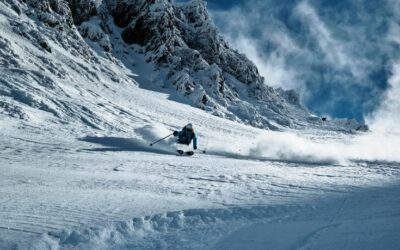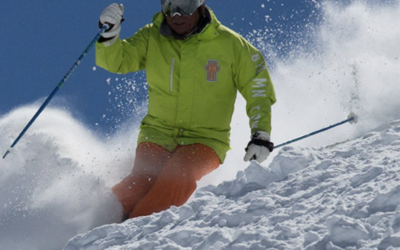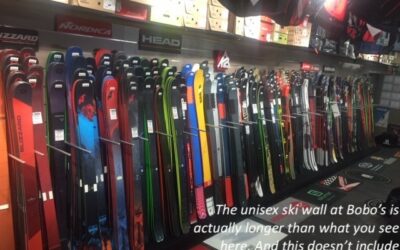
As I’ve been telling you since I first ascending this pulpit, there is nothing you can do to help your skiing more than procuring a properly fit ski boot. There is no way to compensate for its absence, no alternative that makes the choice of boot immaterial. It is, in a word, essential.
Given the primordial importance of the bootfitting enterprise, I thought it might be instructive if you, Dear Reader, experienced a typical bootfitting interaction from the bootfitter’s point of view. Let’s suppose introductions are over and you’re now seated before me, eager to get the process underway.
Before I even ask you to show me your bare feet, I’ve been observing your stance and seated posture. I’m trying to gauge, in general, how much of an athlete I have in front of me. Some people glide through the world; others, shall we say, don’t. It’s too early to form judgments, of course, but information gathering starts at, “Hi, my name’s Jackson.”
I’m going to ask to see your bare feet and to take a look at whatever you brought as a ski sock. The sock will get an immediate verdict, yes, these will be fine, or no, let me get you something that will make a happy outcome more likely. Your bare feet will usually require a little re-positioning, as I want them hip-width apart, right angle at the knee and hip, feet aimed at me.
While I’m guiding your bare tootsies into a neutral position, I’m feeling for any abnormalities and asking questions like, “Any history of injury I should know about? Any areas that always give you trouble?” I’m scanning typical problem areas for telltale signs of issues I’ll have to deal with no matter what boot I target.
I’m going to measure the length of both your feet, and usually the heel-instep perimeter (HIP). Other interesting measurements – notably arch length and width – I don’t need to measure as the evidence is staring me in the face. What I can’t tell just by eyeballing are the flexibility of your arch and your ankle range of motion, so I’ll conduct a couple of 5-second tests to see how healthy and receptive to support your arches are and if your ankle ROM is compromised.
As I scan your foot and lower leg, I’m looking at how each element – calf, ankle, heel, midfoot and forefoot – looks relative to the whole. For example, if am I looking at a big piston of a calf mounted on a slender lower leg and ankle, with a high arch, how am I going to fit this amalgam? What oddity do I prioritize?
The answer is always, prioritize the bones of the rear foot. In this case, I’m going to need a low-volume shell, even though the calf and midfoot are screaming for something, anything, larger. Why do I go this route? Because the hardest part of the boot to modify is the heavily reinforced heel and ankle area, so I want the ideal match of skier and boot to be in this zone. The calf pinch I can deal with by raising the heel a tad, which will annoy the arch until I expand that area, which is easy to do, much simpler than trying to carve out new territory in the heel.
Now I’m ready to hear your skiing history, where you’ve been, where you dream of going, what runs you seek out, what you wouldn’t ski on a bet. I’m always interested in your current boots and why they’ve fallen out of favor. Is there anything in particular you want to try on, because of a friend’s recommendation or a previous, positive experience? Left to my own devices, I won’t be making a lot of trips to the stock room, so if you have a model in mind, now is the time to mention it.
A good bootfitter doesn’t just know about feet and how they behave in the hostile environment of ski boots; he or she also needs to know the strengths and weaknesses of every model in inventory. It’s the ideal marriage of boots and feet that we’re trying to consummate; the more one knows about both, the better the probable outcome.
Before I put you in the first model and size I’ve selected for you to try on, I want to revisit your arch. No matter what boot I retrieve, the insole that comes with it will be a nothing-burger, a mere placeholder for a device that actually does something. That “something” is full contact with the zillions of proprioceptors in your arch, a key component in your balance system that beg to be connected, and need support to do their job. While off-the-rack solutions can’t usually achieve the perfect match that’s attainable in a custom insole, even an approximate fit is better than the nothing-burger.
At this point, I know a lot about what boot I’m leaning towards, but there’s still one critical factor I can’t predict: your ability to flex a ski boot. Every model has a designated flex index; the higher the number, the stiffer the boot. In most cases, you want the stiffest boot you can comfortably flex forward while standing on the boot bench. The first boot I present may not be the stiffest option available, but I will be shooting for the highest flex I suspect the customer can manage.
Boot pricing is directly correlated to flex: the higher the flex number, the higher the price. Usually, each 10-point jump on the flex index triggers a $100 bump at retail. The best advice being proffered in today’s Revelation is: DO NOT GET A SOFTER BOOT JUST TO SAVE $100. The boots you buy today may be with you for the next decade. If you want to improve as a skier over that span – no matter what form said improvement may take – a closer-fitting, more supportive and more responsive boot will make it possible. The C-note you spend to get the better boot is a pittance over the lifespan of the boots and a paltry fraction of the total cost of one’s equipment, not to mention lift passes, lodging, transportation… You get the idea.
Once I have you in the right boot, in the right flex and you have solid underfoot support, we’re done. Almost. I want to see you flex the boot and rock side to side. I’m looking for stance and alignment issues that could limit your performance and/or comfort. Based on what I see, I may elect to slightly shift your ramp angle or modify your lateral cuff alignment.
That’s it. There are always other accoutrements to consider, such as a heated boot bag, a Booster strap or a custom inner boot, but job one is done and dusted. Shall we look at skis?
Related Articles
Just How Strange Will the 21/22 Ski Market Be?
To (temporarily) kowtow to the cult of brevity, the short answer is, “not very.”
To elaborate, most major ski brands didn’t derail the introduction of new products that were in the works well before the pandemic dropped the hammer. There’s a rhythm to the product renewal cycle that shifts the spotlight every year to a different model family within any brand’s global collection; that rhythm was largely respected despite the unique obstacles imposed on the process this year. If most of the models appearing in 21/22 catalogs seem similar to what was offered this year, it’s because this is how the line renewal machinery ordinarily operates.
What’s difficult to judge from outside the R&D pipeline is what we’re not seeing. That is, were there more new models or upgrades to existing star products ready to launch that were put on hold to avoid overloading a potentially weakened distribution network? Possibly; what might have been a planned six-model launch may have been trimmed to three or four, for example.
Happily, there’s no real downside to this scenario for the prospective ski buyer. All essential model family refreshing and line extensions will unfold as forecast. If you haven’t bought a ski in three or four years – I believe the average span between new ski purchases is over seven – the entire universe of Alpine skis is new to you. You may spot some names you recognize, but the skis that bear the name will almost assuredly be different.
“How Is It in The Bumps?”
This question is one of the last objections a ski buyer tosses into the flow of the sale just as the salesperson has guided it to the brink of consummation. To keep the impending close on course, the suave salesperson will hedge the issue with some bland reassurance without raising the obvious retort, that no ski can overcome all the many and curious ills that plague the untalented mogul skier.
A great skier can manage bumps no matter what ski he or she is on. That doesn’t mean experts don’t have favorite skis for this spine-rattling condition, but they don’t need to change skis just because they encounter a bump field. They’ll manage, and chances are anyone watching them won’t be able to tell if the ski is helping, hurting or just along for the ride.
To get the subject out of the way, there are such things as mogul skis, but they’re made for competitors, not your everyday, all-terrain skier. Their tiny (61mm-66mm) waists and svelte sidecuts were common 25 years ago, but they’re as rare as bacon at a bar mitzvah today. Unless you’re planning to compete, there’s no reason for you to fish in this pond.
The Savvy Shopper: How to Buy Skis
Let’s begin with a recap of the fundamentals.
Realskiers’ model selection methodology starts by dividing the Alpine ski market into seven categories, using waist width as the organizing principle for three excellent reasons:
1. This dimension is the single best indicator of the ski’s capabilities.
2. Waist width is a hard number, not a fuzzy concept like skier type.
3. Suppliers product lines align with this method, creating models in every category according a coherent pricing logic.





